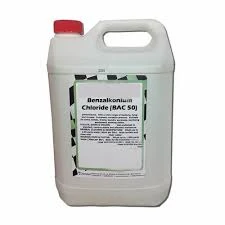Coagulants and Flocculants
Understanding Coagulants and Flocculants Key Players in Water Treatment
Coagulants and flocculants are essential chemical agents used in water treatment processes to remove impurities and improve water quality
. These substances play critical roles in industries, municipal water treatment facilities, and even in domestic water purification systems.Coagulants are substances that promote the aggregation of particles suspended in water, leading to the formation of larger aggregates known as flocs. The most commonly used coagulants include aluminum sulfate (alum), ferric chloride, and polyaluminum chloride. When added to water, coagulants neutralize the charges on suspended particles, allowing them to clump together more easily. This process, known as coagulation, is typically the first step in water treatment. It significantly reduces the turbidity of water caused by sediments, organic matter, and microorganisms, making the subsequent filtration and disinfection processes more effective.
Following coagulation, the next phase in the water treatment process is flocculation. This stage involves gently mixing the coagulated water to encourage the growth of flocs into larger, more easily removable aggregates. Flocculants, which are often high molecular weight polymers, enhance this process by further bridging the gaps between the coalescing particles. Common flocculants include polyacrylamide and various natural polysaccharides. The resulting flocs can then be removed through sedimentation or filtration, yielding clearer, cleaner water.
coagulants and flocculants

The use of coagulants and flocculants has expanded beyond traditional water treatment. They are utilized in wastewater management, industrial processes, and even in the food industry to clarify juices and refine oils. The efficiency of these substances depends on several factors, including water chemistry, pH levels, and the nature of impurities present.
Environmental considerations are increasingly prompting the search for more sustainable alternatives to traditional coagulants and flocculants. Bio-based agents derived from natural materials are being developed to minimize chemical usage and reduce environmental impact while maintaining efficiency in water treatment processes.
In conclusion, coagulants and flocculants are vital components in the pursuit of clean water. Their ability to effectively remove impurities enables a wide range of applications, ensuring potable water availability and supporting environmental sustainability efforts. As technology advances, the development of newer, greener alternatives will likely enhance their efficacy and reduce ecological footprints.
-
Water Treatment with Flocculant Water TreatmentNewsJun.12,2025
-
Polymaleic AnhydrideNewsJun.12,2025
-
Polyaspartic AcidNewsJun.12,2025
-
Enhance Industrial Processes with IsothiazolinonesNewsJun.12,2025
-
Enhance Industrial Processes with PBTCA SolutionsNewsJun.12,2025
-
Dodecyldimethylbenzylammonium Chloride SolutionsNewsJun.12,2025





